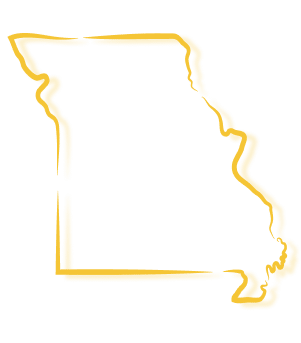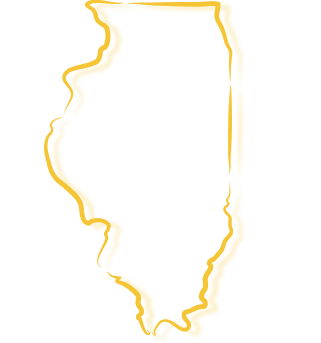What to Do if You’re in a Train Accident

By Zane T. Cagle | May 6, 2019 | Train Accidents
Did you know that in 2018, more than 10,000 reported train accidents and related incidents took place in the United States? This includes thousands of fatalities and personal injuries due to collisions from signal malfunctions, derailments, and operator errors. You may know what to do after a car accident, which typically includes calling the police, exchanging insurance information, filing a claim, and dealing with any damage. But what do you do after a train accident? It typically doesn’t involve exchanging insurance cards with the conductor. Furthermore, making a claim for personal injuries with a public entity, such as a city or state-owned subway, light rail, or railroad, is complicated.
If you were injured in a train accident, whether as a driver, pedestrian, bystander, or passenger, we may be able to help. An experienced Missouri train accident attorney at The Cagle Law Firm can guide you through the claims and litigation process after you suffered injuries in a train accident. To schedule your free, no risk Missouri train accident and personal injury consultation, call us today at (314) 257-0214 or contact us online.
The Truth About Train Accidents
There are multiple types of train accidents that cause personal injuries to a variety of claimants in the United States. The Federal Railroad Administration reported the following types of train accident causes in 2018:
- Collisions
- Derailments
- Track damage/misdirection
- Human error
- Equipment failure
- Signal malfunctions
- Car decoupling
- Trainyard incidents
- Vehicle-train collisions
Of these incidents, derailments and vehicle-train accidents were the leading types of train accident injuries in the United States. In Missouri, St. Louis City and Jackson County reported the most train accidents in the state. If you were injured in a train accident, taking the following steps with the help of a qualified train accident attorney may mitigate your injuries and protect your claim for compensation.
Step 1: Mitigating Injuries
Train accidents are often unexpected because train passengers rarely pay attention to the rails and roads surrounding the train. They may be working, sleeping, or reading on their daily commute when an impact suddenly throws them from their seats. Most trains don’t have seatbelts or airbags to protect passengers from injuries in the event of a crash. Passengers injured during a derailment often suffer from back and neck injuries, but sometimes need to be immediately moved from the train. Train accidents at busy transit stations may cause a chain reaction of events. The damaged train may be stuck on a track and subsequently struck by the train behind it.
Further, a train striking a car in an intersection may subsequently derail and roll over after a high-speed impact. This means passengers are subject to multiple injury-inducing events. As such, your first priority after a train accident should be to exit the train if it is safe to do so. Listen for instructions from the crew, and if necessary, call 911 to ask for professional assistance exiting the train. Sometimes, it’s safer to remain onboard, while other times fire or danger makes it necessary to utilize the emergency release. Your safety and the safety of the remaining passengers should be your top priority after a train accident.
Step 2: Preserving Evidence
Most commuter trains do not maintain a passenger manifest. If you have a multi-ride pass or unchecked ticket, there may be no way to prove you were onboard at the time of the accident. Victims able to take photographs and videos of the accident should do so, and these should include photos of yourself at the scene, your seat, the area in which you sustained injuries, and any evidence tending to identify the cause of the crash. Clearly, if you sustain life-threatening injuries, you will not be able to gather information listed below. If you are physically able, you should do the following to the extent possible:
- Gather witness information. Ask for the names and contact information of your fellow passengers and any pedestrian witnesses.
- Save any paper tickets and receipts placing you at the scene or on the train.
- Identify yourself to emergency workers and police – Don’t risk getting lost after a multi-casualty train accident. Be sure your information gets into any incident reports and monitor publication of the same to make necessary amendments.
There is only so much you can do after a serious injury in a train accident, but be sure to preserve what you can and gather any necessary evidence as soon as possible after a train accident.
Step 3: Treating Train Accident Injuries
To recover monetary damages after a serious train accident, you must have suffered a physical injury. This typically means personal injuries and mental anguish for which you required, and sought, medical intervention. Some of the most common train accident injuries include:
- Traumatic brain injuries: These occur when there is a violent blow to your head. In train accidents, this normally occurs when a train impacts your vehicle, your head impacts a seat during the accident, or a sudden stop caused your head to snap back and forth.
- Paralysis: Due to a lack of seatbelts on most trains, a violent accident can propel passengers forward with enough force to cause a spinal fracture. Serious spinal injuries often result in paralysis, the loss of all function to your legs and/or below your neck.
- Neck and back injuries: These are the most common types of train accident injuries, again, due to lack of safety measures. Neck sprains, strains, and fractures, as well as herniated discs in your spinal cord, can be disabling.
- Crushing injuries and fractures: Railroad crossing and derailment accidents often result in severe crushing injuries and fractures. The greater the force of the impact, the more likely you’ll suffer from a fracture. Broken legs, arms, ribs, and dislocated shoulders commonly result from serious train accidents. Crushing injuries, such as when a bone sustains multiple chips and fractures, may even result in amputation.
- Burns: Railroad crossing and train collisions may result in serious fuel fires. This can cause painful full-thickness burns if you get trapped in your vehicle or a train car after a train accident.
Be sure to let your treating doctors know that you’re treating for a train accident injury. Keep a list of all doctors, physical therapists, and psychologists you’ve seen related to the train accident. This should include any hospitals, medical equipment, home nursing services, and pharmacies utilized to treat your injuries.
Step 4: Submitting a Claim
Train accidents differ from car accidents primarily due to the insurance claim’s process. Publicly owned railroads are entities of the state, which means there are certain legal prerequisites to filing litigation. This is due to an old legal concept called sovereign immunity. With a privately owned railroad, you have the right to file a case for personal injuries without making an insurance claim. However, privately owned trains have an entirely different process of notice and claims.
With public entities such as the MetroLink your Missouri personal injury claim generally abides by the Missouri Torts Claims Act. This typically requires you to you to put the entity on notice within a certain amount of time.
In mass-casualty incidents, such as train accidents, the entity may decide to settle all personal injury claims prior to litigation. Each railroad incident is subject to different statutes of limitations and an expert attorney will review all of the facts and determine the best course of action for your best interest. However, if you fail to give notice and/or hire an attorney for the best legal advice, the entity may have the right to deny any related personal injury litigation filed against it.
Essentially, submitting a claim for injury depends on several factors including notice of injury (time after incident that you put the railroad on notice), the injury, and ownership of the specific train transportation.
Step 5: Supporting Your Claim
After a serious train accident, multiple victims may file an insurance claim or a case for personal injuries in Missouri court. There is generally a limit to every insurance policy, and while you can seek additional compensation directly from the liable entity, it’s often difficult to recover those excess funds.
Most personal injury settlements are paid by liability insurance or a limited state injury fund, depending on the state and incident facts. The more victims of the train accident, the more limited your recovery may be as settlement funds are distributed between victims. In such cases, it’s essential to make a strong and timely claim for compensation through consulting an expert train injury attorney. Your experienced Missouri personal injury attorney might likely submit the following documents if available:
- The police and/or public incident report
- Proof of your presence at the scene
- Your medical records
- Narrative reports from physicians describing your prognosis and injuries
- Photographs and videos of the scene
- Certified witness statements
- Receipts for needed household help
- Pay stubs and work documentation indicating lost wages
- Any expert witness reports attesting to your past and future damages.
Each incident is unique, so your attorney may submit some information or lack thereof for specific reasons. The better presented your evidence after a mass casualty train accident, the more likely you’ll receive a fair settlement.
Step 6: Recovering Damages
When asserting your claim for settlement after a train accident injury, you should make a reasonable demand for compensation. This demand will depend on the nature of your injuries, past loses, anticipated future losses, pain and suffering, and the cause of the accident. For example, claimants injured in a train accident caused by an intoxicated driver or employee may demand additional compensation to punish the offender for recklessness. These are called punitive damages, but they are not available in all cases.
As the claimant, you have the legal burden of proving your claim to compensation with reliable evidence. One of the most effective ways of doing so is to hire an experienced legal team to review your case and provide a reasonable future estimate of your damages. The process is not a simple one and an attorney working on your behalf is familiar with all of the facts and the steps required.
As part of your team, medical experts may conduct an examination, review your medical records, and render an opinion as to the seriousness of your injuries, your limitations, and your prognosis. Occupational experts may evaluate these recommendations and opine how your injuries will affect your future career opportunities and work life. Economic experts can then calculate your reasonable damages, which may include lost earnings, lost fringe benefits, lost career opportunities, medical expenses, transportation costs, home modifications, and additional damages.
You should not settle a train accident claim without first understanding the lifelong implications of your injuries. Once you settle, you will not be permitted to seek future compensation for unanticipated damages. Working with a strong legal team is often essential after a train accident injury.
Tips for Avoiding a Future Train Accident
While it’s impossible to anticipate derailments and mechanical malfunctions, it is possible to avoid dangerous many different types of vehicular-train crashes. These account for the majority of personal injuries sustained in train-related accidents.
- Never race a train, even if the gates are up. If you see or hear a train coming, stop. There may be a gate malfunction, and your vehicle’s undercarriage can get stuck on the raised crossing.
- Never go around down gates, even if there is no train in sight. Gates are often designed to lower based on the speed of the incoming train. If the gates are down, stop.
- Slow down and look both ways before crossing the rails. Signal, gate, and train malfunctions do happen.
- Be sure that trailer jacks are in the right position, and avoid crossing with a trailer if possible. These are known to cause vehicles to get stuck on the tracks.
- If your vehicle is stuck or disabled at a railway crossing, even with no train in sight, get out and call for help. It’s more likely you will suffer injuries than the railway passengers during a collision.
Because certain train crossings are on raised ground, speeding drivers or those with trailer jacks can get trapped on the railway. It’s easier for you to stop than a moving train, so be diligent when crossing the tracks.
Contact an Experienced Missouri Train Accident Attorney Today
With a short statute of limitations, contact a Missouri train accident attorney at The Cagle Law Firm immediately after you suffer injuries in a train accident. The claims process is seldom the same for train accidents as for motor vehicle collisions, and it’s important to diligently protect your right to recover compensation. To schedule your free, no-risk Missouri train accident and personal injury consultation, call us today at (314) 257-0214 or contact us online.
Contact Us Today
The Cagle Law Firm serves accident and injury clients throughout St. Louis and the greater St. Louis metro area, including St. Louis Counties of Chesterfield, Wildwood, Eureka, Ladue, Olivette, Clayton, Kirkwood, Fenton, Affton, and Jefferson Counties of Arnold, High Ridge, Antonia, House Springs, and the eastern Missouri and southern Illinois communities. If you or your family needs legal assistance with your personal injury case, call The Cagle Law Firm at (314) 276-1681 or use our online contact form to request a free case review or get more information.
Areas Served
The Cagle Law Firm – Missouri
The Cagle Law Firm – Illinois
The Cagle Law Firm – Kentucky
CONTACT THE CAGLE LAW FIRM TODAY
Request your FREE CASE REVIEW today by calling (314) 276-1681 or by sending a message through the site contact form. Your contact info stays private and is only used to reply to your inquiry.
Whether you need information about a new injury or existing injury, our lawyers answer your questions with no-risk and no followup marketing.
Free Consultations and Case Reviews
Questions? Ask An Attorney
Fields marked with an * are required
Copyright © 2025 St. Louis Personal Injury Lawyers | The Cagle Law Firm. All rights reserved.
Disclaimer | Site Map | Privacy Policy
Get a free case review with St. Louis' best personal injury lawyers to help you win top compensation





